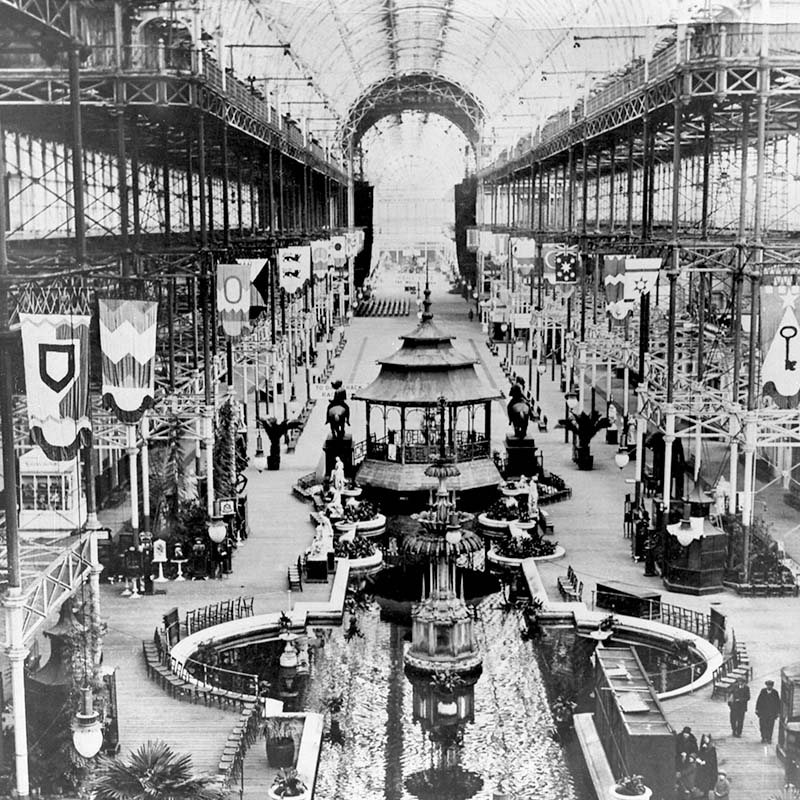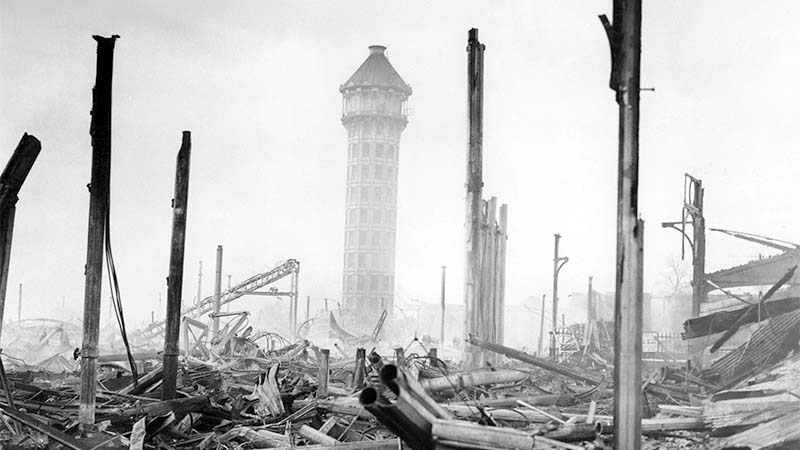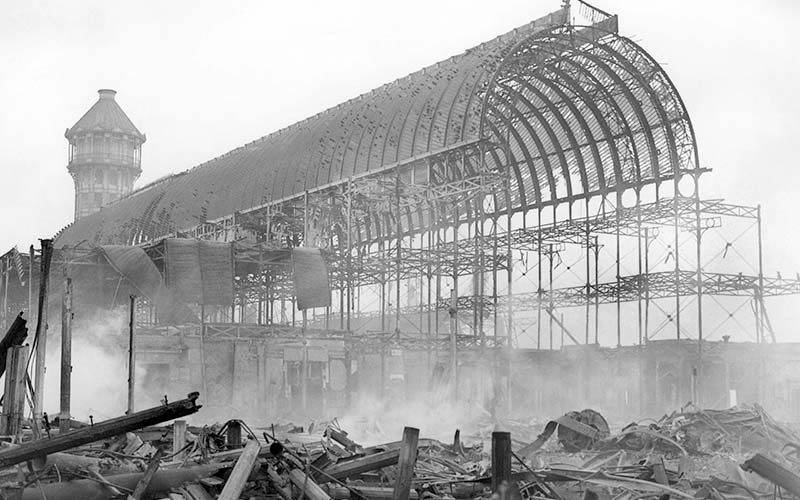Visit Crystal Palace today and there are only hints of what you would have found there a hundred years ago. At the north end you will see sphinxes, steps, pillars, terraces, and arches . What you won’t see is the actual Crystal Palace that gave the area its name, fame, train station, football team and focal point.
The original building of the Crystal Palace was commissioned for ‘The Great Exhibition’ of 1851 in Hyde Park, London. This was the O2 of its day. It was an exhibit which showed off all sorts of amazing natural and modern manufactured inventions from around the world. There were printing machines, a 50kg lump of gold, folding pianos, rare diamonds, jewels and much more. Millions of visitors enjoyed the spectacle.

The building was designed by Joseph Paxton who wasn’t an architect, but a naturalist and botanist. His greenhouse style design managed to encompass three large, precious elm trees. The main materials it was built from were iron and large glass panels.
In 1852, after the Great Exhibition ended, Paxton arranged to have the Crystal Palace moved to South London. Sydenham was then a rural area with bountiful green space. Not only was the Palace dismantled and transported there, it was expanded to become the largest building in the world and taller than Nelson’s Column.

It was a great leisure opportunity but most of the working population had only one day a week to visit. The owners failed to recuperate the amount of money invested and needed to run the building. Attractions inside started to close, and the building fell into disrepair.
At about 7pm on the 30th November 1936 the manager, Sir Henry Buckland, was doing his rounds. He was checking the palace with his daughter (whose name was Chrystal) when he noticed that a small fire had broken out at the Sydenham end of the Palace. She recalls… “Father saw the flickering light of the fire and told me to run through to warn the choir. As I did so, I noticed a blue flash running along the floor”.
Apparently, the Gas Company had warned of a leak within the building. Some accounts say it was in the women’s cloakroom, some say the Egyptian Court. Either way, on duty security guards tried unsuccessfully to deal with the fire, which was spreading. This delayed them calling the Fire Brigade until about 8pm when the first call was made.

Penge Fire Brigade was first to respond, followed by Beckenham and Croydon. They were not part of London Fire Brigade at that time.
Eventually London Fire Brigade was asked for assistance, and a major incident was declared. London's Chief Officer Major Morris took control, committing over 50 pumps. However, by the time the first of the 88 fire engines were on scene, the fire had spread throughout the building.

Whilst the cause for the fire starting will never be confirmed, the reason that it spread so rapidly is largely due to the wooden flooring. Being at the top of a big hill, the breeze helped to fan the flames.
Iron melts at approximately 1500 degrees celsius. Glass, melts at a similar temperature but is more likely to crack or shatter before reaching that level. From the footage of the fire that survives, it appears that the iron frames became weak with the heat, buckled and lost their stability due to the glass fracturing.

Unable to bear as much weight, they collapsed, creating a domino effect. There was little the firefighters could do to save the Palace. All that was standing afterwards were the water towers flanking the main structure. These survived until the Second World War, when they were considered to be an easy navigation tool for enemy bombers looking for London, and were dismantled.
The fire itself was massive and could be seen for miles around. One commuter described watching the glow as he took his train to Southend. Locals came to watch firefighters try in vain to save the building.
These days, a building of significant historical value is likely to be fitted with smoke and heat detectors, sprinklers, dedicated escape routes and early warning systems. Whilst these preventative measures can be expensive to install discreetly, some buildings are irreplaceable. Local Fire Stations would make regular familiarisation visits and have plans in place of how to deal with any fire that might break out.
The Park is still popular with areas to relax, play sports, enjoy the playground or get lost in the maze. The sphinxes remain undisturbed, looking out across Crystal Palace Park where they once guarded one of London finest attractions.
This article was researched and written by museum volunteer Josh S. You can more details about the history of the building and the incident at the Crystal Palace Museum website or on the Crystal Palace Foundation website.